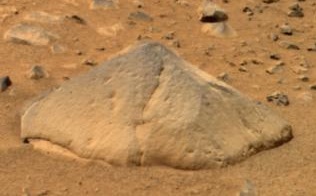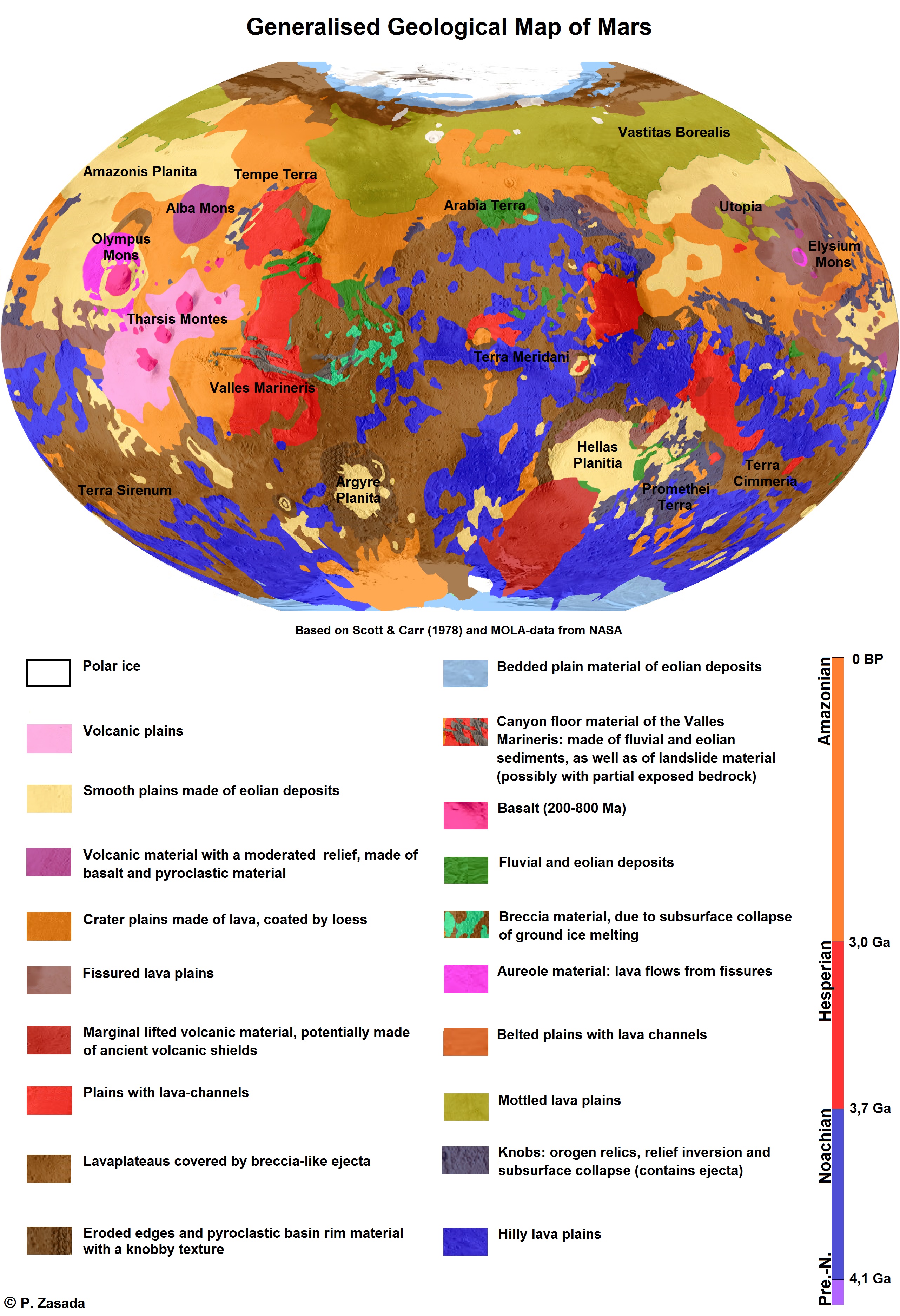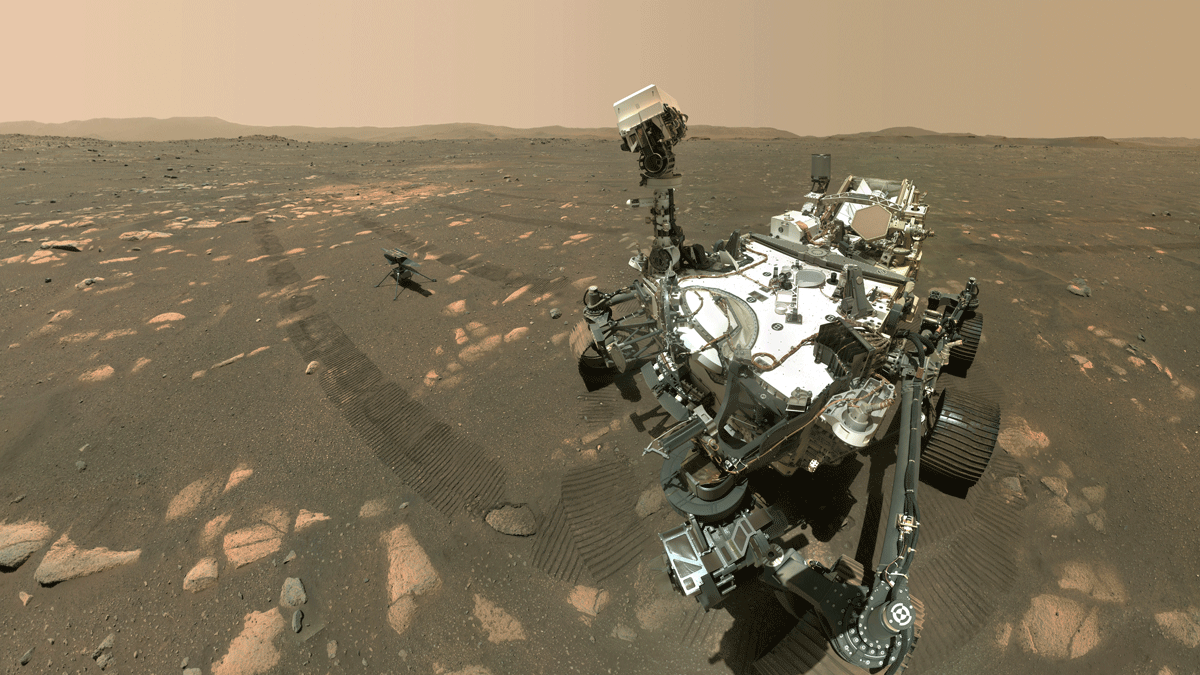|
Chemistry And Camera Complex
Chemistry and Camera complex (ChemCam) is a suite of remote sensing instruments on Mars for the Curiosity (rover), ''Curiosity'' rover. As the name implies, ChemCam is actually two different instruments combined as one: a laser-induced breakdown spectroscopy (LIBS) and a Remote Micro Imager (RMI) telescope. The purpose of the LIBS instrument is to provide elemental compositions of rock and soil, while the RMI will give ChemCam scientists high-resolution images of the sampling areas of the rocks and soil that LIBS targets. The LIBS instrument can target a rock or soil sample from up to away, vaporizing a small amount of it with about 30 5-nanosecond pulses from a 1067 Nanometre, nm infrared laser and then observing the spectrum of the light emitted by the vaporized rock. Overview ChemCam has the ability to record up to 6,144 different wavelengths of ultraviolet, visible, and infrared light. Detection of the ball of luminous plasma is done in the visible, near-UV and near-infr ... [...More Info...] [...Related Items...] OR: [Wikipedia] [Google] [Baidu] |
The Unscrambler
The Unscrambler X is a commercial software product for multivariate data analysis, used for calibration of multivariate data which is often in the application of analytical data such as near infrared spectroscopy and Raman spectroscopy, and development of predictive models for use in real-time spectroscopic analysis of materials. The software was originally developed in 1986 by Harald Martens and later by CAMO Software. Functionality The Unscrambler X was an early adaptation of the use of partial least squares (PLS). Other techniques supported include principal component analysis (PCA), 3-way PLS, multivariate curve resolution, design of experiments, supervised classification, unsupervised classification and cluster analysis. The software is used in spectroscopy (IR, NIR, Raman, etc.), chromatography, and process applications in research and non-destructive quality control systems in pharmaceutical manufacturing, sensory analysis Sensory analysis (or sensory evaluation ... [...More Info...] [...Related Items...] OR: [Wikipedia] [Google] [Baidu] |
Spacecraft Instruments
A spacecraft is a vehicle or machine designed to fly in outer space. A type of artificial satellite, spacecraft are used for a variety of purposes, including communications, Earth observation, meteorology, navigation, space colonization, planetary exploration, and transportation of humans and cargo. All spacecraft except single-stage-to-orbit vehicles cannot get into space on their own, and require a launch vehicle (carrier rocket). On a sub-orbital spaceflight, a space vehicle enters space and then returns to the surface without having gained sufficient energy or velocity to make a full Earth orbit. For orbital spaceflights, spacecraft enter closed orbits around the Earth or around other celestial bodies. Spacecraft used for human spaceflight carry people on board as crew or passengers from start or on orbit ( space stations) only, whereas those used for robotic space missions operate either autonomously or telerobotically. Robotic spacecraft used to support scientific ... [...More Info...] [...Related Items...] OR: [Wikipedia] [Google] [Baidu] |
Mars Science Laboratory Instruments
Mars is the fourth planet from the Sun and the second-smallest planet in the Solar System, only being larger than Mercury. In the English language, Mars is named for the Roman god of war. Mars is a terrestrial planet with a thin atmosphere (less than 1% that of Earth's), and has a crust primarily composed of elements similar to Earth's crust, as well as a core made of iron and nickel. Mars has surface features such as impact craters, valleys, dunes and polar ice caps. It has two small and irregularly shaped moons, Phobos and Deimos. Some of the most notable surface features on Mars include Olympus Mons, the largest volcano and highest known mountain in the Solar System and Valles Marineris, one of the largest canyons in the Solar System. The Borealis basin in the Northern Hemisphere covers approximately 40% of the planet and may be a large impact feature. Days and seasons on Mars are comparable to those of Earth, as the planets have a similar rotation period and tilt o ... [...More Info...] [...Related Items...] OR: [Wikipedia] [Google] [Baidu] |
Timeline Of Mars Science Laboratory
The Mars Science Laboratory and its rover, ''Curiosity'', were launched from Earth on November 26, 2011. As of , , ''Curiosity'' has been on the planet Mars for sols ( total days; ') since landing on August 6, 2012. ''(See Current status.)'' Prelaunch (2004–2011) In April 2004, the United States National Aeronautics and Space Administration (NASA) called for scientific experiments and instruments proposals for the Mars Science Laboratory and rover mission. Launch was proposed for September 2009. By December 14, 2004, eight proposals were selected, including instruments from Russia and Spain. Testing of components also began in late 2004, including Aerojet's monopropellant engine with the ability to throttle from 15 to 100 percent thrust with a fixed propellant inlet pressure. By November 2008 most hardware and software development was complete, and testing continued. [...More Info...] [...Related Items...] OR: [Wikipedia] [Google] [Baidu] |
Scientific Information From The Mars Exploration Rover Mission
NASA's 2003 Mars Exploration Rover Mission has amassed an enormous amount of scientific information related to the Martian geology and atmosphere, as well as providing some astronomical observations from Mars. This article covers information gathered by the Opportunity rover during the initial phase of its mission. Information on science gathered by Spirit can be found mostly in the Spirit rover article. The unmanned Mars exploration mission, commenced in 2003 sent two robotic rovers, ''Spirit'' and ''Opportunity'', to explore the Martian surface and geology. The mission was led by Project Manager Peter Theisinger of NASA's Jet Propulsion Laboratory and Principal Investigator Steven Squyres, professor of astronomy at Cornell University. Primary among the mission's scientific goals is to search for and characterize a wide range of rocks and soils that hold clues to past water activity on Mars. In recognition of the vast amount of scientific information amassed by both rover ... [...More Info...] [...Related Items...] OR: [Wikipedia] [Google] [Baidu] |
Mars Science Laboratory
Mars Science Laboratory (MSL) is a robotic spacecraft, robotic space probe mission to Mars launched by NASA on November 26, 2011, which successfully landed ''Curiosity (rover), Curiosity'', a Mars rover, in Gale (crater), Gale Crater on August 6, 2012. The overall objectives include investigating Mars' Planetary habitability, habitability, studying its Climate of Mars, climate and Planetary geology, geology, and collecting data for a human mission to Mars. The rover carries a variety of scientific instruments designed by an international team. Overview MSL successfully carried out the most accurate Martian landing of any known spacecraft at the time, hitting a small target landing ellipse of only , in the Aeolis Palus region of Gale Crater. In the event, MSL achieved a landing east and north of the center of the target. This location is near the mountain Aeolis Mons (a.k.a. "Mount Sharp"). The rover mission is set to explore for at least 687 Earth days (1 Martian year) ove ... [...More Info...] [...Related Items...] OR: [Wikipedia] [Google] [Baidu] |
Geology Of Mars
The geology of Mars is the scientific study of the surface, crust, and interior of the planet Mars. It emphasizes the composition, structure, history, and physical processes that shape the planet. It is analogous to the field of terrestrial geology. In planetary science, the term ''geology'' is used in its broadest sense to mean the study of the solid parts of planets and moons. The term incorporates aspects of geophysics, geochemistry, mineralogy, geodesy, and cartography. A neologism, areology, from the Greek word ''Arēs'' (Mars), sometimes appears as a synonym for Mars's geology in the popular media and works of science fiction (e.g. Kim Stanley Robinson, Kim Stanley Robinson's Mars trilogy). The term areology is also used by the Areological Society. Geological map of Mars (2014) File:Geologic Map of Mars figure2.pdf, Figure 2 for the geologic map of Mars Global Martian topography and large-scale features Composition of Mars Mars is a terrestrial planet, whic ... [...More Info...] [...Related Items...] OR: [Wikipedia] [Google] [Baidu] |
Exploration Of Mars
The planet Mars has been explored remotely by spacecraft. Probes sent from Earth, beginning in the late 20th century, have yielded a large increase in knowledge about the Martian system, focused primarily on understanding its geology and habitability potential. Engineering interplanetary journeys is complicated and the exploration of Mars has experienced a high failure rate, especially the early attempts. Roughly sixty percent of all spacecraft destined for Mars failed before completing their missions and some failed before their observations could begin. Some missions have met with unexpected success, such as the twin Mars Exploration Rovers, ''Spirit'' and ''Opportunity'' which operated for years beyond their specification. Current status , there are three operational rovers on the surface of Mars, the ''Curiosity'' and ''Perseverance'' rovers, both operated by the United States of America space agency NASA, as well as the ''Zhurong'' rover, part of the ''Tianwen-1'' mi ... [...More Info...] [...Related Items...] OR: [Wikipedia] [Google] [Baidu] |
Composition Of Mars
The composition of Mars covers the branch of the geology of Mars that describes the make-up of the planet Mars. Elemental composition Mars is differentiated, which—for a terrestrial planet—implies that it has a central core made up of metallic iron and nickel surrounded by a less dense, silicate mantle and crust. Like Earth, Mars appears to have a molten iron core, or at least a molten outer core. However, there does not appear to be convection in the mantle. Presently Mars shows little geological activity. The elemental composition of Mars is different from Earth's in several significant ways. First, Martian meteorite analysis suggests that the planet's mantle is about twice as rich in iron as the Earth's mantle. The planet's distinctive red color is due to iron oxides on its surface. Second, its core is richer in sulphur. Third, the Martian mantle is richer in potassium and phosphorus than Earth's and fourth, the Martian crust contains a higher percentage of volatile ... [...More Info...] [...Related Items...] OR: [Wikipedia] [Google] [Baidu] |
SuperCam
SuperCam is a suite of remote-sensing instruments for the Mars 2020 ''Perseverance'' rover mission that performs remote analyses of rocks and soils with a camera, two lasers and four spectrometers to seek organic compounds that could hold biosignatures of past microbial life on Mars, if it ever existed there. SuperCam was developed in collaboration between the Research Institute in Astrophysics and Planetology () of the University of Toulouse in France, the French Space Agency (CNES), Los Alamos National Laboratory, the University of Hawaii and the University of Malaga in Spain. The Principal Investigator is Roger Wiens from Los Alamos National Laboratory. SuperCam is an improved version of the successful ChemCam instruments of the ''Curiosity'' rover that have been upgraded with two different lasers and detectors. SuperCam is used in conjunction with the AEGIS (Autonomous Exploration for Gathering Increased Science) targeting system, a program in which Vandi Verma, NASA roboticis ... [...More Info...] [...Related Items...] OR: [Wikipedia] [Google] [Baidu] |
List Of Rocks On Mars
This is an alphabetical list of named rocks (and meteorites) found on Mars, by mission. This list is a sampling of rocks viewed, and is not an exhaustive listing. A more complete listing may be found on the various NASA mission web sites. This listing does ''not'' include Martian meteorites found on Earth. Names for Mars rocks are largely unofficial designations used for ease of discussion purposes, as the International Astronomical Union's official Martian naming system declares that objects smaller than are not to be given official names. Because of this, some less significant rocks seen in photos returned by Mars rovers have been named more than once, and others have even had their names changed later due to conflicts or even matters of opinion. Often rocks are named after the children or family members of astronauts or NASA employees. The name ''Jazzy'', for example, was taken from a girl named Jazzy who grew up in Grand Junction, CO, USA. Her father worked for NASA and cont ... [...More Info...] [...Related Items...] OR: [Wikipedia] [Google] [Baidu] |








